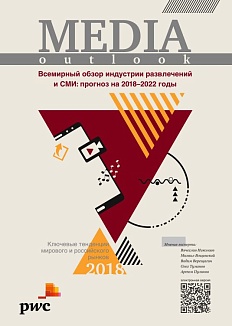In this report, Accenture studies how China is using digital and technologies to combat the consequences of the COVID-19 pandemic and facilitate economic recovery.
In a very short time, China managed to move from a massive outbreak to containment and, most recently, to economic recovery. As other countries are entering the early stages of the coronavirus outbreak, governments and business leaders around the world can learn from Chinas experiences to mount a speedy and effective response against the virus.
The Roscongress Foundation presents the salient points of the publication accompanied by fragments of broadcasts of relevant panel discussions from the business programme of international events held by the Roscongress Foundation.
Technologies such as location-based services, big data analytics, and robotics have been applied on a grand scale to track and identify high-risk cases, limit movement and minimize human-to-human contact.
China enacted strict policies to track travelers movements, quarantine high-risk cases, and minimize public contact. But none of these policies would have produced the desired outcomes if they werent supported by technologies such as location-based service, big data analytics, and robotics.
China leveraged location-based services (LBS) and big data analytics to identify high-risk cases without overwhelming the healthcare system.
Chinas major telecommunications companies partnered with Internet companies such as Alibaba to develop a QR color code system. The system uses telecom data to reveal and track everyones risk level, based on where the person has traveled and with whom they have been in contact.
It was vital to minimize human-to-human contact during the outbreak. For this, all kinds of robotics were deployed to perform «human-touch» tasks. For example, patrolling robots roamed the streets to test body temperatures. Additionally, other robots were deployed to perform high-risk tasks. In Wuhan, sanitizing robots were widely used to disinfect surgical rooms in hospitals, as well as quarantine zones and facilities.

These efforts have paid off; the number of new domestic cases has fallen to nearly zero in most major cities.
Digital platforms and technologies for providing transparent and real-time information were crucial in easing public panic. China established digital platforms to keep people informed, which helped contain the spread of the virus.
In times of emergency, transparent and real-time information is critical to easing public panic. In a broad sense, citizens have the right to information about the overall trends of the outbreak. And, on a granular level, citizens want to know about the real-time situation of their neighborhoods. In China, digital platforms have been established to aggregate and share information with citizens. Companies have also built alert functions to minimize risks for their users.
Going beyond satisfying peoples day-to-day needs, many companies used platforms and apps to provide virtual experiences or virtual communities to meet peoples recreational and social needs while they were staying at home.
There is no pure brick-and-mortar business in China anymore. In China, online-to-offline (O2O) businesses play an important role. Wide adoption of O2O and online service platforms not only facilitate grocery shopping, but also fulfill dining and medical needs.
Unlike traditional eCommerce, which requires customers to wait days for their orders to be delivered, consumers that purchase goods on O2O platforms can receive them in an hour, delivered from their neighborhood stores.
Companies in China leveraged digital to resume their business operations. Some used social networks and live-streaming events to keep consumers engaged. Others leveraged the Internet of Things (IoT) and robotics for automated manufacturing. Digital workspace solutions enabled people to resume work from home.
Businesses shutting down and citizens staying home inevitably affects productivity. Companies in China have explored various ways to resume their business operations. Some, for example, are using social networks and live-streaming events to keep consumers engaged.
For more information about possible ways to stabilize the economy during a pandemic, see the StayHomeEconomy and COVID-19 special sections of the Roscongress information and analytical system, and the Artificial Intelligence, AI, Robotics, and Big Data sections about cutting-edge technologies which have the potential to transform manufacturing industries, the service sector, and the public sector.






